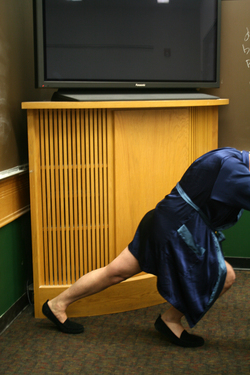- Home
- About Us
- TSPT Academy
- Online Courses
-
Resources
- Newsletter
- Business Minded Sports Physio Podcast
- Day in the Life of a Sports PT
- Residency Corner
-
Special Tests
>
-
Cervical Spine
>
- Alar Ligament Test
- Bakody's Sign
- Cervical Distraction Test
- Cervical Rotation Lateral Flexion Test
- Craniocervical Flexion Test (CCFT)
- Deep Neck Flexor Endurance Test
- Posterior-Anterior Segmental Mobility
- Segmental Mobility
- Sharp-Purser Test
- Spurling's Maneuver
- Transverse Ligament Test
- ULNT - Median
- ULNT - Radial
- ULNT - Ulnar
- Vertebral Artery Test
- Thoracic Spine >
-
Lumbar Spine/Sacroiliac Joint
>
- Active Sit-Up Test
- Alternate Gillet Test
- Crossed Straight Leg Raise Test
- Extensor Endurance Test
- FABER Test
- Fortin's Sign
- Gaenslen Test
- Gillet Test
- Gower's Sign
- Lumbar Quadrant Test
- POSH Test
- Posteroanterior Mobility
- Prone Knee Bend Test
- Prone Instability Test
- Resisted Abduction Test
- Sacral Clearing Test
- Seated Forward Flexion Test
- SIJ Compression/Distraction Test
- Slump Test
- Sphinx Test
- Spine Rotators & Multifidus Test
- Squish Test
- Standing Forward Flexion Test
- Straight Leg Raise Test
- Supine to Long Sit Test
-
Shoulder
>
- Active Compression Test
- Anterior Apprehension
- Biceps Load Test II
- Drop Arm Sign
- External Rotation Lag Sign
- Hawkins-Kennedy Impingement Sign
- Horizontal Adduction Test
- Internal Rotation Lag Sign
- Jobe Test
- Ludington's Test
- Neer Test
- Painful Arc Sign
- Pronated Load Test
- Resisted Supination External Rotation Test
- Speed's Test
- Posterior Apprehension
- Sulcus Sign
- Thoracic Outlet Tests >
- Yergason's Test
- Elbow >
- Wrist/Hand >
- Hip >
- Knee >
- Foot/Ankle >
-
Cervical Spine
>
- I want Financial Freedom
- I want Professional Growth
- I want Clinical Mastery
So how do we address these differences? Shirley Sahrmann discussed this topic in a lecture that we highly recommend listening to. Instead of focusing on the side with increased stiffness, we should address the side with decreased stiffness. Strength training has been found to increase muscle stiffness (Magnusson, 1998). By bringing both sides of the body to symmetry (equal stiffness), an equal distribution of forces prevents any abnormal stresses on the body. Stretching still has its place, of course, but we must be sure to distinguish between muscle stiffness and adaptive shortening when choosing to apply the intervention. Next time you're measuring muscle length, check for stiffness and muscle length! References:
Magnusson SP. (1998). Passive properties of human skeletal muscle during stretch maneuvers. A review. Scand J Med Sci Sports. 1998 Apr;8(2):65-77. Web. 10 June 2013. Mizuno T, Matsumoto M, Umemura Y. (2013). Decrements in Stiffness are Restored within 10 min. Int J Sports Med. 2013 Jun;34(6):484-90. Web. 10 June 2013. Mizuno T, Matsumoto M, Umemura Y. (2013). Viscoelasticity of the muscle-tendon unit is returned more rapidly than range of motion after stretching. Scand J Med Sci Sports. 2013 Feb;23(1):23-30. Web. 10 June 2013.
3 Comments
Scott
7/13/2013 09:06:27 am
Interesting topic. Seems intuitively off to me though, so would love to hear your opinion. If one side is stiff AND limited, just strengthening would not fully create symmetry would it? If the increased resistance to stretch was still within normal range, maybe the other side is just weak. Am I thinking about this the right way?
Reply
Thanks Scott, great comments. You are correct that if one side is both stiff and limited, you would not only want to strengthen the opposite side, but stretch the ipsilateral side until normal range was achieved. And you are correct, from my understanding of Sahrmann's lecture, decreased stiffness on one side would be associated with weakness, so we would want to strengthen that side. Basically, we should be looking at stiffness and adaptive shortening as two different impairments, thus requiring different interventions. Both can contribute to injury, especially if asymmetry persists. That is a great point about the confusion between stiffness, tight, etc. Since you brought it up, I think it is an excellent opportunity for a review on the topic, especially with the neurological components contributing to mechanical stiffness. I'll let you know what the review is ready. Thanks again!
Reply
Leave a Reply. |
Dr. Brian Schwabe's NEW Book in partner with PaleoHacks!
Learn residency-level content on our
Insider Access pages We value quality PT education & CEU's. Click the MedBridge logo below for TSPT savings!Archives
July 2019
Categories
All
|







 RSS Feed
RSS Feed